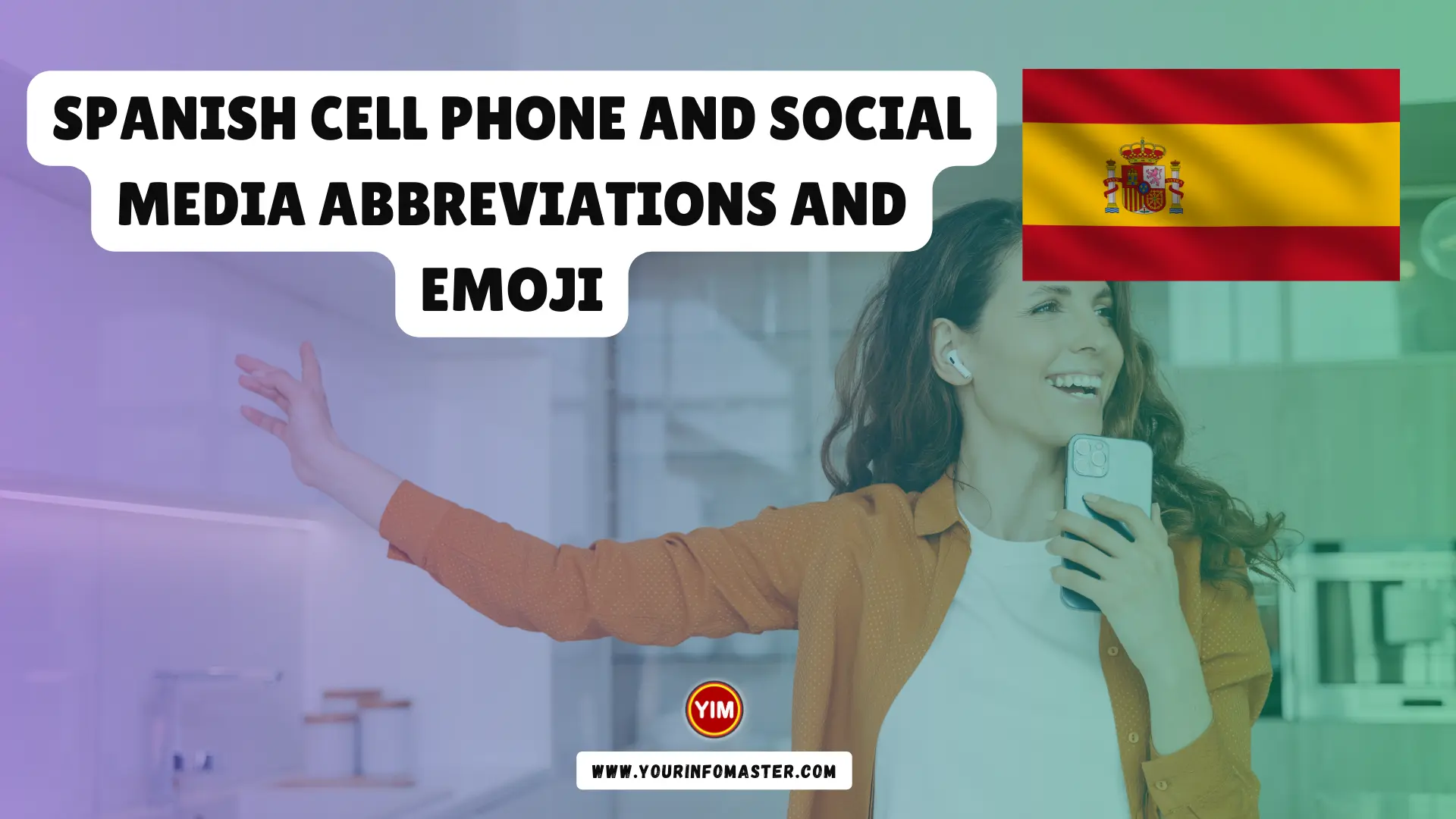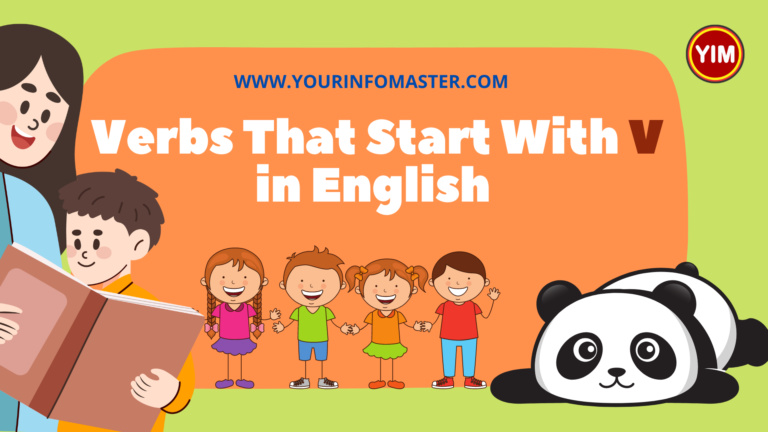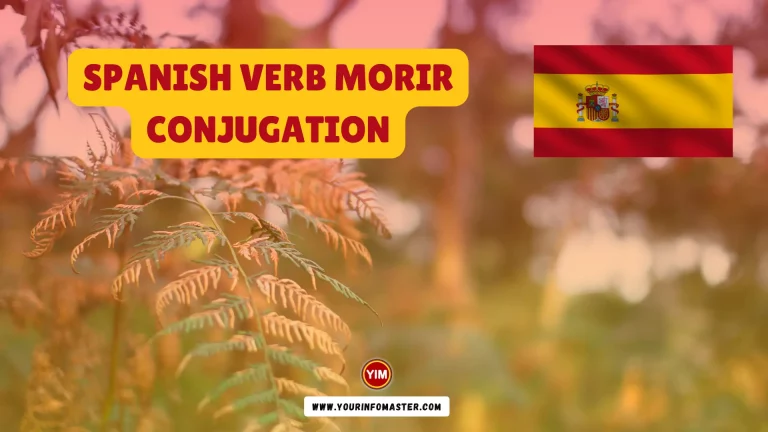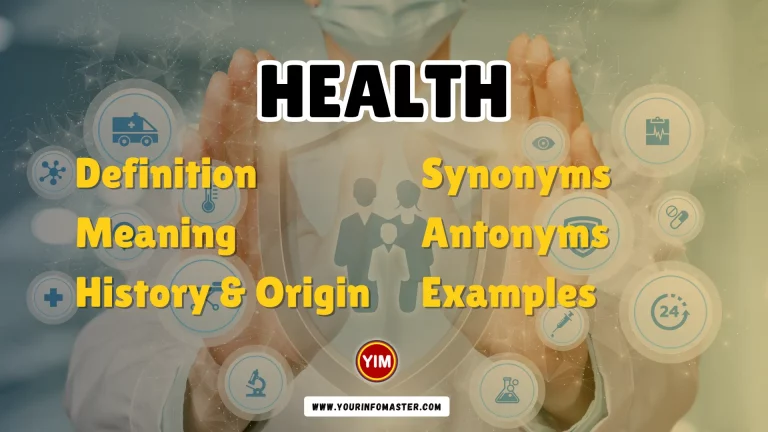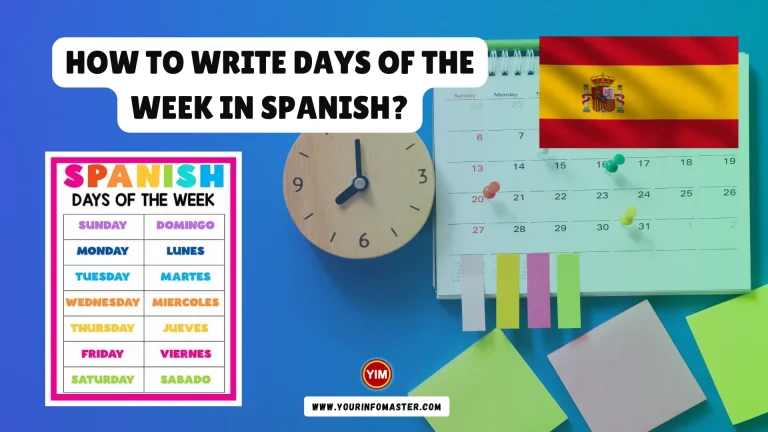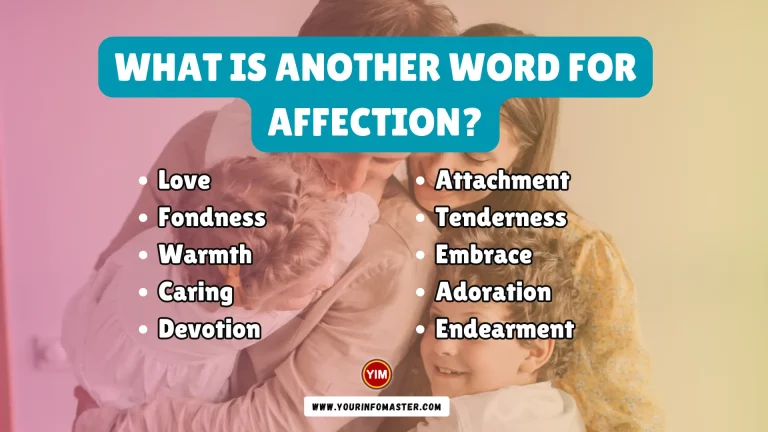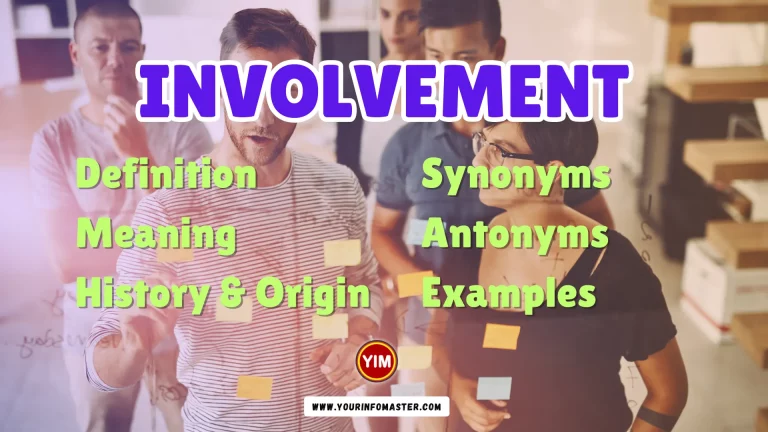Spanish Cell Phone and Social Media Abbreviations: Are you eager to connect with your Spanish-speaking friends through cell phone text messages or social media platforms like Facebook? Navigating these platforms effectively often involves the use of abbreviations that streamline communication and save precious characters.
In this texting and social media abbreviation glossary, you’ll discover a range of shortcuts that will make conversing in Spanish more convenient and enjoyable.
While communicating in Spanish via text messages or social media has its challenges, especially when it comes to typing accented letters and punctuation marks, this glossary is here to simplify the process. We understand that typing special characters might not always be straightforward, but that hasn’t hindered the popularity of SMS (Short Message Service), known as “esemese” in Spanish-speaking circles, for bridging language barriers and fostering connections across the Spanish-speaking world.
Whether you’re new to these platforms or looking to enhance your communication skills, this guide is designed to help you navigate the world of Spanish cell phone texting and social media with ease.
Check also: Spanish Verb Deber Conjugation
Main Points: Spanish Cell Phone and Social Media Abbreviations
- Common Spanish Abbreviations: Learn commonly used abbreviations that Spanish speakers use in text messages and on social media platforms. From simple greetings like “hola” (hello) to abbreviating longer phrases like “te quiero mucho” (I love you very much) to “tqm,” mastering these shortcuts can make your conversations smoother and more efficient.
- Spanish Emojis and Emoticons: Explore the world of emojis and emoticons that add a visual element to your messages. Discover the equivalents of popular emojis in Spanish and learn how to express emotions and reactions using symbols like ? for laughter or ❤️ for love. Emojis transcend language barriers and provide a universal way to convey feelings.
- Spanish Slang and Internet Lingo: Delve into the world of slang and internet lingo that’s popular in Spanish-speaking online communities. From “lol” (laugh out loud) equivalents like “jaja” to acronyms like “OMG” becoming “OMG” (oh my God) in Spanish, understanding these expressions will help you fit in and engage naturally with Spanish-speaking friends online.
Phone Texting Abbreviations and Emoji
Texting in Spanish can be full of fun and convenient shortcuts. Here are some cellphone abbreviations commonly used among Spanish speakers:
- 100pre — siempre — always ?️
- a10 — adiós — goodbye ?
- a2 — adiós — goodbye ?
- ac — hace — (form of hacer) ⏳
- aki — aquí — here ?
- amr — amor — love ?
- aora — ahora — now ⌛
- asdc — al salir de clase — after class ?
- asias — gracias — thanks ?
- b — bien — well, good ?
- bb — bebé — baby ?
- bbr — bbr — to drink ?
- bs, bss — besos — kisses ?
- bye — adiós — goodbye ?
- b7s — besitos — kisses ?
- c — sé, se — I know; (reflexive pronoun) ?
- cam — cámara — camera ?
- cdo — cuando — when ⏰
- chao, chau — adiós — goodbye ?
- d — de — from, of ➡️
- d2 — dedos — fingers ✌️
- dcr — decir — to say ?️
- dew, dw — adiós — goodbye ?
- dfcl — difícil — difficult ?
- dim — dime — tell me ?️
- dnd — dónde — where ❓
- ems — hemos — We have ✅
- ers — eres tú — you are, are you ?
- ers2 — eres tú — are you ?
- exo — hecho — act ?
- eys — ellos — they ?
- inde — fin de semana — weekend ?
- fsta — fiesta — party ?
- grrr — enfadado — angry ?
- hl — hasta luego — see you later ?
- hla — hola — hello ?
- iwal — igual — equal ➕
- k — que, qué — that, what ❓
- kbza — cabeza — head ?
- kls — clase — class ?
- km — como — as, like ?♂️
- kntm — cuéntame — tell me ?️
- KO — estoy muerto — I’m in big trouble. ☠️
- kyat — cállate — Shut up. ?
- m1ml — mándame un mensaje luego — Send me a message later. ?
- mim — misión imposible — mission impossible ?️♂️
- msj — msnsaje — message ?
- mxo — mucho — a lot ?
- nph — no puedo hablar — I can’t talk now. ?♂️
- npn — no pasa nada — nothing’s happening ?♀️
- pa — para, padre — for, father ??
- pco — poco — a little ?
- pdt — piérdete — get lost ?
- pf — por favor — please ?
- pls — por favor — please ?
- pq — porque, porqué — because, why ❓
- q — que — that, what ❓
- q acs? — ¿Qué haces? — What are you doing? ?
- qand, qando — cuando, cuándo — when ❓
- qdms — quedamos — we’re staying ?
- q plomo! — ¡Qué plomo! — What a drag! ?
- q qrs? — ¿Qué quieres? — What do you want? ?♂️
- q risa! — ¡Qué risa! — What a laugh! ?
- q sea — qué sea — whatever ?♀️
- q tal? — qué tal — What’s happening? ?
- salu2 — saludos — hello, goodbye ?
- sbs? — ¿sabes? — Do you know? ?
- sms — mensaje — message ?
- spro — espero — I hope ?
- t — te — you (as object pronoun) ?♀️
- tas OK? — ¿Estás bien? — Are you OK? ✅
- tb — también — also ✅
- tq — te quiero — I love you ❤️
- tqi — tengo que irme — I have to leave ?
- uni — universidad — university, college ?
- vns? — ¿Vienes? — Are you coming? ?♀️
- vos — vosotros — you (plural) ???
- wpa — ¡Guapa! — Sweet! ?
- xdon — perdón — sorry ?
- xfa — por favor — please ?
- xo — pero — but ❌
- xq — porque, porqué — because, why ❓
- ymam, ymm — llámame — call me ☎️
- zzz — dormir — sleeping ?
- + — más — more ➕
- 🙂 — feliz, alegre — happy ?
- 🙁 — triste — sad ☹️
- +o- — más o menos — more or less ?♂️
- – — menos — less ➖
- :p — sacar lengua — tongue sticking out ?
- 😉 — guiño — wink ?
- <3 — corazón — heart ❤️
- <33 — dos corazones — two hearts ?
- ^_^ — sonrisa — smile ?
- 😀 — risa, felicidad — laughter, happiness ?
- :O — sorpresa — surprise ?
- xD — carcajada, risa — laugh, laughter ?
- – — carita llorando — crying face ?
- T_T — carita llorando — crying face ?
- :v — expresión confusa — confused expression ?
- O_o — expresión sorpresa — surprise expression ?
- :S — expresión de duda o confusión — expression of doubt or confusion ?
- B) — gafas de sol — sunglasses ?
- *:/, :* — expresión incierta — uncertain expression ?
- :3 — carita tierna — cute face ?
- <u< — guiño — wink ?
- +1 — estoy de acuerdo — I agree ?
Check also: Spanish Verb Trabajar Conjugation
Social Media Abbreviations and Vocabulary
Using these social media abbreviations and vocabulary can help you navigate and communicate more effectively on various platforms, making your interactions on social media in Spanish more engaging and connected.
Here’s the social media abbreviations and vocabulary with their meanings:
- AHRE, ahre — (origin uncertain) — A word, especially common in Argentina, used to indicate that what has just been said should be understood ironically or as a joke, something like the way the winking symbol can be used ?.
- ALV — a la verga — A common insult, can be considered vulgar.
- etiqueta — The word for “label,” preferred by some for “hashtag.”
- mensaje directo, mensaje privado — Private message. ?
- trending topic, tendencia — Trending topic.
- me gusta — I like it, like. ?
- no me gusta — I don’t like it, dislike. ?
- compartir — To share.
- RT — retweet.
- favorito, fav — Favorite, like. ⭐️
- seguidores, followers — Followers.
- RT, retuit, retwittear — Retweet.
- mencionar, mencionar a alguien — To mention, mention someone.
- subir, cargar — To upload.
- descargar — To download.
- actualizar — To update.
- notificación, noti — Notification. ?
- ajustes — Settings.
- perfil — Profile.
- amigo, amigo en línea — Friend, online friend.
- comentario — Comment.
- me interesa, me gusta — I’m interested, I like it.
- usuario, user — User.
- publicar, postear — To post.
- seguro — For sure, definitely.
- la neta — The truth, the real thing.
Text Messaging Vocabulary: A Guide to Text Communication
Even if some people don’t like it and you won’t find it in most dictionaries, the word “textear” is often used to mean “to text.” You can change it to different tenses like a regular verb. The noun version of it is “texto.” Another word from English is “chatear,” which means “to chat.”
When you send a text using your cellphone, it’s called a “mensaje de texto.” To do this action, you “enviar un mensaje de texto.”
Words that mean cellphone include “teléfono celular” or just “celular,” which is more common in Latin America. In Spain, it’s often called “teléfono móvil” or just “móvil.”
A smartphone is a “teléfono inteligente.” But sometimes, people also say “esmartfón,” which is just like the English word.
For an app that lets you send messages, you can say “aplicación de mensajes” or “app de mensajes.”
Here are some examples about Vocabulary Related to Text Messaging
- Textear: To text (sending text messages).
- Texto: Text (written message).
- Chatear: To chat (online conversation).
- Mensaje de texto: Text message.
- Enviar un mensaje de texto: To send a text message.
- Teléfono celular: Cellphone (commonly referred to as “celular” in Latin America).
- Teléfono móvil: Cellphone (commonly used in Spain).
- Teléfono inteligente: Smartphone.
- Esmartfón: Smartphone (a variation of the English word).
- Aplicación de mensajes: Messaging app.
- App de mensajes: Messaging app.
- Emoticono: Emoticon.
- Emoji: Emoji (commonly used in both English and Spanish).
- Grupo de chat: Chat group.
- Contacto: Contact (someone saved in your phone).
- Bloquear: To block (preventing someone from contacting you).
- Desbloquear: To unblock (reversing the block).
- Notificación: Notification (alert).
- Sonido de notificación: Notification sound.
- Marcar como leído: Mark as read (indicating you’ve seen a message).
Check also: Spanish Verb Creer Conjugation
Benefits of learning Spanish Cell Phone and Social Media Abbreviations
Here are 10 benefits of learning Spanish cell phone and social media abbreviations:
- Efficient Communication: Learning these abbreviations enables faster and more efficient communication on cell phones and social media platforms.
- Connect with Natives: Knowing these abbreviations helps you connect with native Spanish speakers and understand their informal language usage.
- Stay Updated: Stay up-to-date with the latest trends and slang in Spanish-speaking online communities.
- Express Emotions: Abbreviations like emojis and emoticons allow you to express emotions succinctly, enhancing your online interactions.
- Cultural Awareness: Learning these abbreviations provides insight into the cultural nuances and language evolution in Spanish-speaking countries.
- Enhanced Messaging Skills: Using text abbreviations improves your messaging skills, making your communication more dynamic and engaging.
- Time-Saving: Abbreviations save time by condensing longer words and phrases into shorter, easily typed forms.
- Language Flexibility: Mastering these abbreviations boosts your language flexibility and adaptability in various digital contexts.
- Confidence Building: Feeling comfortable with texting and social media abbreviations boosts your confidence when communicating online.
- Connect Across Borders: Whether for personal or professional reasons, understanding these abbreviations helps you connect seamlessly across Spanish-speaking borders, transcending language barriers.
Conclusion
Mastering Spanish cell phone and social media abbreviations, along with emojis, not only enhances your online communication skills but also deepens your connection to the language and culture. Embrace these shortcuts to navigate the digital world of Spanish with confidence and creativity.
If you really enjoyed the article about “Spanish Cell Phone and Social Media Abbreviations,” then I would be very grateful if you’d help it spread by emailing it to your friends or sharing it on Twitter, Instagram, or Facebook. Thank you!
Have you read “Spanish Cell Phone and Social Media Abbreviations“ Which of these blogs are you reading, and how is it similar to one of them?
Read More
- How to Type Spanish Accents and Punctuation in Windows?
- How to Type Spanish Accents and Punctuation on a Mac?
- How to Use Hyphens in Spanish?
- What are Spanish Greetings?
- Spanish Strong Vowels and Weak Vowels
- Spanish Verb Esperar Conjugation, Meaning, Translation, Examples
- Spanish Verb Dejar Conjugation, Meaning, Translation, Examples
- Spanish Verb Llamar Conjugation, Meaning, Translation, Examples
- Spanish Verb Pasar Conjugation, Meaning, Translation, Examples

